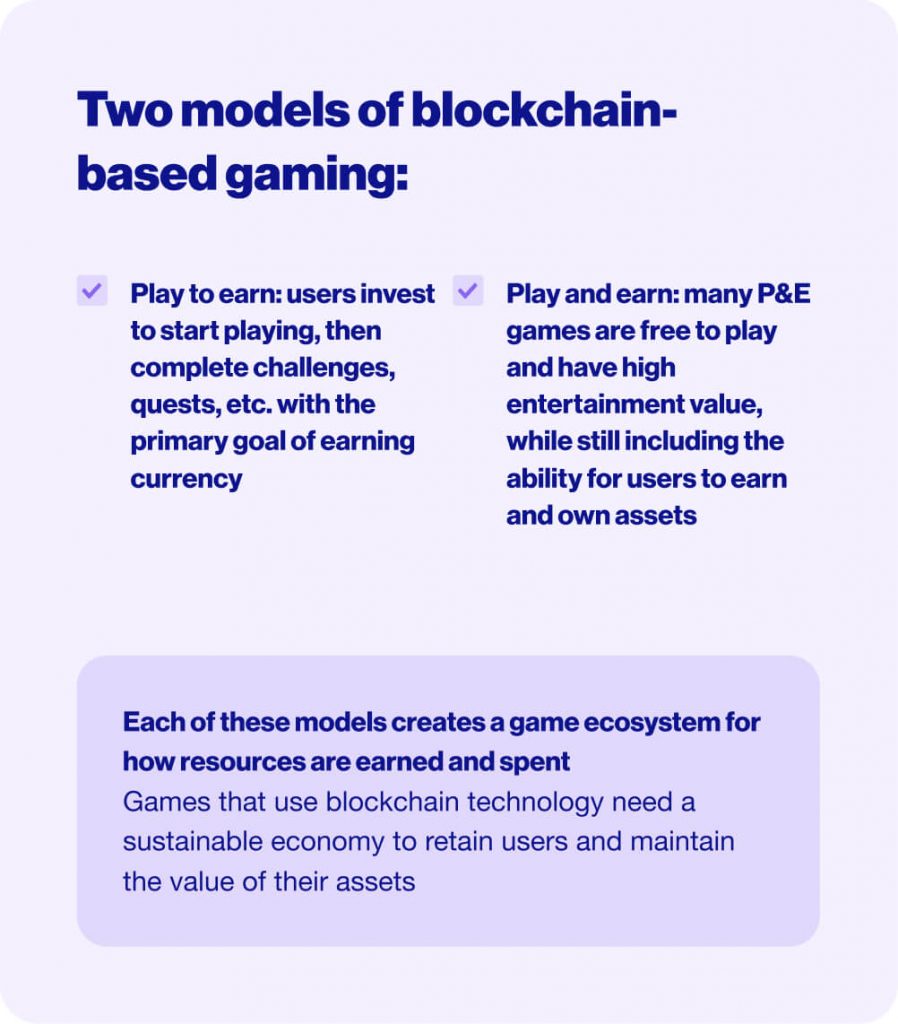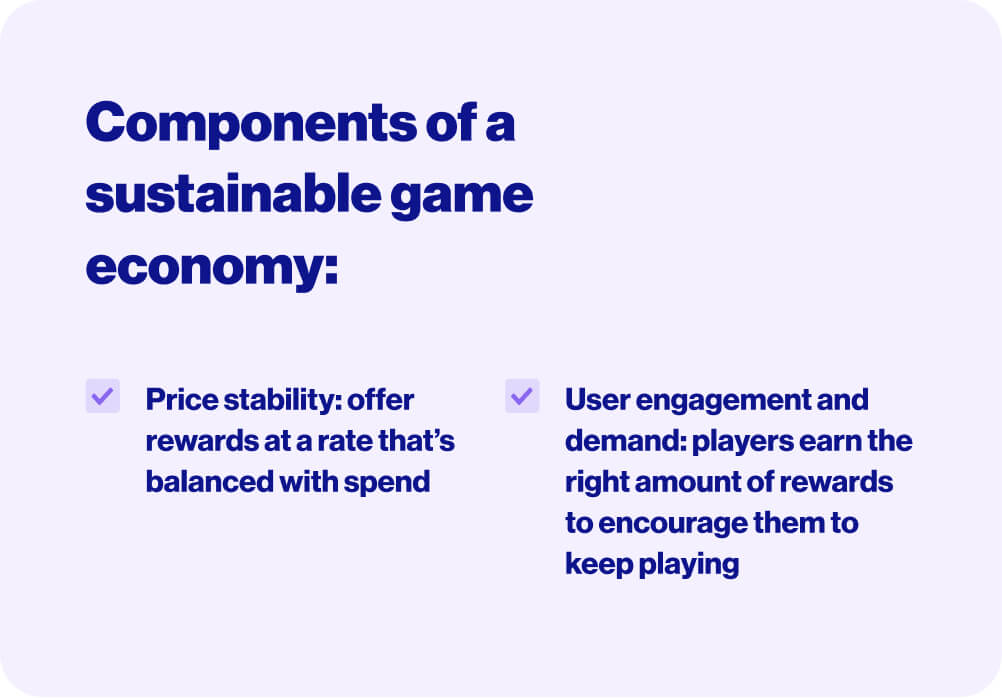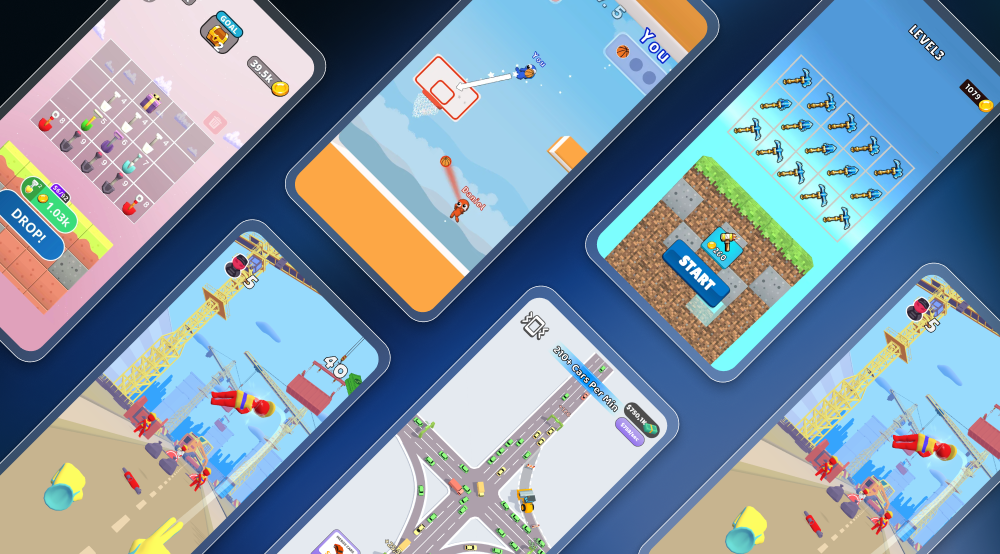Games that use blockchain technology are rapidly gaining popularity, and now’s the time to get acquainted with what this technology is and how to start building your own games using the blockchain. In the first part of this series, we gave a high-level introduction of blockchain technology and its key benefits for improving retention and opening up new opportunities for monetization.
Here in the second part, Gal Fisheloviz, Director of Business Strategy, Blockchain Gaming at ironSource, and Etai Koren, Director of Blockchain Games at ironSource, dive deeper into use cases for the technology in gaming by discussing the two main frameworks currently in play. These are:
- Play to earn (P2E)
- Play and earn (P&E)
Keep reading to learn more about these models and where the future of blockchain gaming lies. Let’s start by talking about play to earn.

Play to earn
P2E blockchain games are pretty much like they sound - users play them to earn currency. For example, players complete challenges like quests or battles to earn tokens they can add to their crypto wallets or spend in the game.
This is one of the earliest models of blockchain gaming, and continues to be popular today but has changed over time. Early P2E games let users start playing with minimal investment - back then, users had to purchase an NFT from a limited collection, which meant they already had to have a certain level of understanding and competency with cryptocurrency. But often, these players purchased one or more NFTs from the limited amount available for the sole purpose of making a profit instead of for the enjoyment of the game itself. As more users joined these games and the NFTs and tokens they earned grew in value as they became more scarce, the rewards became more lucrative and the cost of playing became higher. This priced out many average users who couldn’t afford to play and led to the creation of guilds. Guilds are groups of players or investors that buy high-value NFTs then rent them out to users so they can play the games and earn tokens. Users pay the guilds back with their tokens in what essentially functions as a revenue-share. Though they’re now highly influential within the game economy, guilds function outside of these ecosystems - meaning the resources they earn usually don’t get spent back within the game.
As more users joined these games, the rewards became more lucrative and the cost of playing became higher.
With the value of assets increasing exponentially, play-to-earn games started launching quickly with little entertainment value and with the sole purpose of attracting high-value investors and guilds. These users created an exchange ecosystem where players would rent NFTs, earn tokens, then sell some of these tokens back in hopes of continuing to earn more profit. This pattern led to higher user churn - players were only chasing a profit so left a game for one with a better earning opportunity. In these cases there was more value leaving a game than entering it - resources weren’t redistributed in the game because users earned their rewards then sold them off to players for a profit, often outside of the game instead of using their rewards to buy in-game assets, like upgrades.
Given the imbalance of resources entering and leaving the game - and users failing to retain for a long time, it becomes very challenging to build a sustainable economy under the play to earn model. To have a healthy game ecosystem, a blockchain gaming model needs new users to constantly enter and invest their resources back into the game. This maintains the value and profitability of the assets in the game, which makes them appealing for users.
Given the imbalance of resources entering and leaving the game, it becomes very challenging to build a sustainable economy under the play to earn model.
P&E or play and earn games came into the space to solve the concerns of user churn and an unsustainable game ecosystem.
Play and earn
The P&E model evolved from the P2E framework and puts the focus back on providing real entertainment value to create a sustainable, open game economy. Like P2E games, users of play and earn games can win NFTs and tokens that get added directly to their crypto wallets. But, unlike their predecessor, many P&E games are free to play - players can then earn rewards by either being highly skilled or purchasing assets, like NFTs and tokens.
Play and earn games aim to build value with their gameplay. Providing a high entertainment value encourages players to keep playing, and to do so, they’ll want to get rewards they can spend in the game to improve their gameplay experience.
Play and earn games aim to build value with their gameplay, which encourages players to keep playing and strive to get rewards they can spend in the game.
For example, in a P&E game, players can earn tokens to buy a character NFT that unlocks special powers. While the NFT can still be used on a secondary market or sold outside the game, it’s more likely to be spent for in-game bonuses or upgrades to make it more enjoyable and rewarding to play the game. As rewards get spent back in the game instead of exchanged for profit outside of the game, the game economy runs more smoothly and sustainably than the P2E model.
A functioning game economy is based on the flow of assets - you need to offer rewards at a rate that’s balanced with spend so prices remain accessible to users. And, players need to earn enough rewards to remain engaged and maintain demand levels. Basically, the inflow and outflow of assets need to be balanced. This is more likely to be the case with P&E than with P2E.

The future is play and earn
The direction of play to earn games is heading towards an unsustainable ecosystem - and future. Prices continue to keep many users from playing, and as a result more guilds and investors are staking their claim. A market for play to earn blockchain games will likely remain - many developers are trying to solve the challenge of the game economy and make it more sustainable. However, unless they start prioritizing entertainment and focus on giving users a truly enjoyable gameplay experience, P2E is likely to remain niche.
As many agree, the fundamental purpose of games - including those on the blockchain - is to be fun and engaging, which is why play and earn games are likely to become the next dominant model of games using blockchain technology. They provide entertainment value along with the benefits of ownership from being on the blockchain, which drives demand higher to spend assets within the game. This creates a virtuous ecosystem that lets players earn rewards they fully own while encouraging in-game spending to improve their gameplay experience.
The fundamental purpose of games is to be fun and engaging, which is why play and earn games are likely to become the next dominant model of games using blockchain technology.
When executed correctly, these well-oiled game economies of the P&E framework can create more doors of opportunity for game design, monetization, and marketing. Whichever model you choose, using blockchain technology for gaming now sets you up better to improve both user engagement and your monetization strategy as this technology likely gains more popularity.




